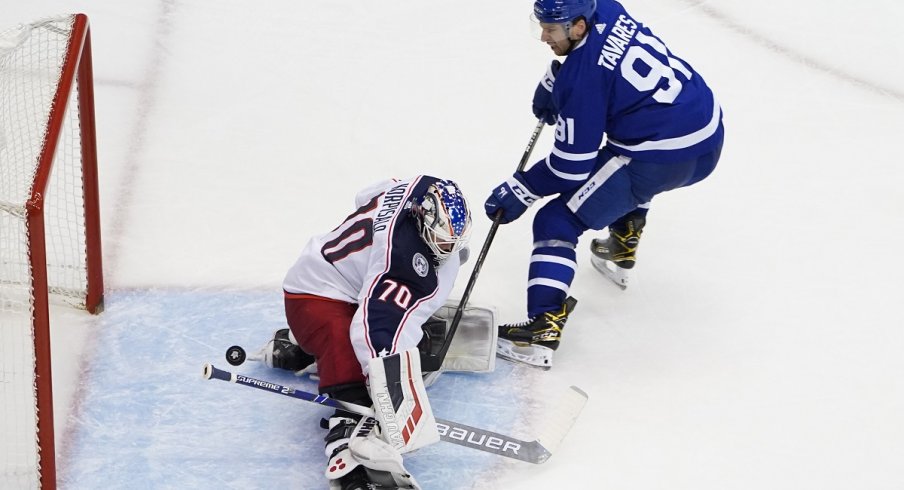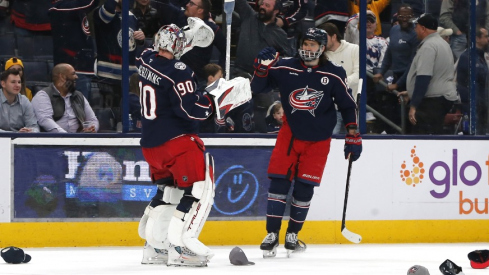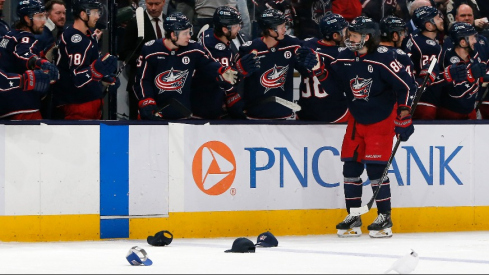John Tortorella was brief but assertive when asked why his Columbus Blue Jackets had issues in a 3-0 loss to the Toronto Maple Leafs in Game 2 of the qualifying round.
Here are three things that turned from a strength to a weakness between Games 1 and 2:
Penalty Woes
In Game 1, the Blue Jackets were shorthanded just one time, killing it off with ease. Hell, Boone Jenner had the best scoring chance for either team on that power play.
Not so in Game 2. The Blue Jackets were shorthanded five times, and while they were successful in killing off all five power plays, it meant 10 minutes of the game where the Blue Jackets couldn't be on the attack (insert sarcastic joke here). Riley Nash had two 2-on-1's in just one penalty kill, but the point remains. For this Blue Jackets team to be successful, they must get back to the discipline they showed in Game 1. Giving this Toronto team power plays is dicey business, and even when the penalties are killed off, it's still time where they're not on the attack.
Top Defense Pairing Sliced And Diced
Seth Jones and Zach Werenski were world-beaters in Game 1. TSN insider Bob McKenzie went as far as to say that the Blue Jackets' top pair "might be the best defense pair in the league."
Werenski and Jones might be the best defense pair in the league. And the second pair with Savard and Gavrikov that's a really good, really good top four.#CBJ
— 1st Ohio Battery (@1stOhioBattery) August 4, 2020
[ via @SpecmenceCBJ ]pic.twitter.com/zSTIaNJ142
The Game 1 numbers backed that up. The pairing tilted the ice in a major way, basically allowing the Blue Jackets a ~60/40 shot-for advantage with the pairing on the ice (5v5) in Game 1, per NaturalStatTrick, while playing almost exclusively against top competition.
Game 2 was rough, with the duo being carved for a 30/70 shot-for disadvantage. Werenski, particularly, had a tough game, as he was up ice for both (non empty-net) goals against. That's a tricky balance the Blue Jackets will want to balance. Jones and Werenski are among the best offensive defensemen in the league and are two of the more talented players on the roster. Of course the Blue Jackets want them to join the rush to spark the offense. On the other hand, them being up ice leaves the team prone to odd-man rushes. Preventing odd-man rushes was the number one most important item on the to-do list for the Blue Jackets coming into this series.
But while Werenski is the easy scapegoat, Jones struggled mightily in his own right. Getting the pair to get back to their prolific play in Game 3 will go a long way towards taking a 2-1 series lead.
Auston Matthews against Seth Jones today (5v5):
— My son William would like his wets dusted (@mostlyleafies) August 4, 2020
6:28 TOI, 14-1 shot attempts
Zone Entry Against Issues
It wasn't just Jones and Werenski who struggled. Mikael Nahabedian tracked zone entry data for Game 1 and 2 from the Maple Leafs perspective. His data tell a fascinating story. The skinny on zone entries: controlled entries lead to more shot attempts, shots on goal, expected goals, and goals than dumped (and obviously failed) entries. When a Toronto player skates into the Blue Jackets zone with puck control, it counts as a controlled zone entry.
Here are the individual Zone Entry stats for Leafs' players from Game 1 vs CBJ. pic.twitter.com/T3jkoB5R1p
— Mikael Nahabedian (@hunterofstats) August 3, 2020
In Game 1, Toronto's most dangerous players - Auston Matthews, Mitch Marner, John Tavares, and William Nylander - combined for 38 zone entry attempts. Of those attempts, they controlled the puck on 39.5%. In Game 2, the group combined for the same 38, but carried the puck upon entry on 50% of those plays. It may not seem like a drastic difference, but giving the best players in the world time and space on a more consistent basis is a recipe for disaster.
Here are the individual Zone Entry stats for Leafs' players from Game 2 vs CBJ. pic.twitter.com/dZnsyNgITq
— Mikael Nahabedian (@hunterofstats) August 4, 2020
It's also notable that the Maple Leafs as a team had 10 more entry attempts than they had in Game 1, implying they had the puck more. There, the eye test and the numbers certainly line up.
The series is far from over, but if the Blue Jackets won't do themselves any favors if they're unable to remedy any of these issues.


